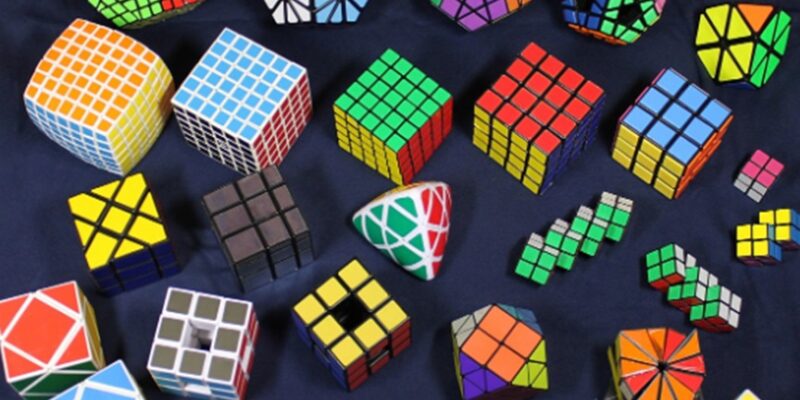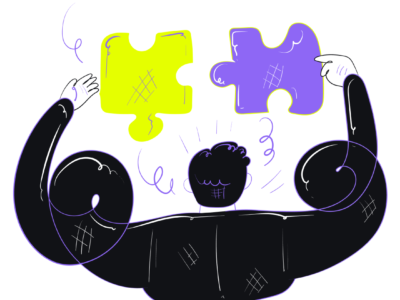Introduction
In the realm of puzzle solving, few challenges are as iconic and enduring as cube puzzles. From the classic Rubik’s Cube to its myriad variations, these multifaceted puzzles have captivated minds and sparked curiosity for decades. Beyond their entertainment value, puzzles offer a rich tapestry of cognitive benefits and insights into problem-solving strategies. In this exploration, we delve into the intricate world of puzzles, examining their structure, appeal, and profound impact on cognitive processes.
Understanding Cube Puzzles
Puzzles come in various forms, but they typically consist of a three-dimensional arrangement of smaller units that can be manipulated to achieve a specific configuration or pattern. The most famous example, the Rubik’s Cube, features six faces, each adorned with a different colour, with the objective being to align all the colours on each face. Other puzzles may involve different objectives, such as matching patterns or arranging pieces in a specific order.
What distinguishes puzzles from traditional two-dimensional puzzles is their multidimensional nature. Instead of simply moving pieces along a flat surface, solvers must navigate the complexities of spatial relationships, rotations, and permutations. This adds an extra layer of challenge and intrigue, enticing enthusiasts to unravel their mysteries further.
The Appeal of Cube Puzzles
The enduring popularity of puzzles can be attributed to several factors. Firstly, there’s the sheer satisfaction of manipulating physical objects to solve a problem. The tactile feedback of turning, twisting, and rotating the puzzle pieces adds a hands-on dimension to the solving experience, engaging both the mind and the senses.
Furthermore, puzzles offer a perfect blend of accessibility and depth. While the basic rules are simple enough for beginners to grasp, mastering the intricacies of more complex puzzles requires patience, strategy, and spatial reasoning skills. This scalability makes puzzles suitable for individuals of all ages and skill levels, ensuring broad appeal across demographics.
Cube Puzzles and Cognitive Benefits
Beyond their entertainment value, puzzles provide a myriad of cognitive benefits. Research has shown that regularly engaging in puzzle-solving activities can enhance various cognitive functions, including memory, problem-solving, and spatial awareness.
Puzzles, in particular, offer a unique cognitive workout due to their three-dimensional nature. By mentally rotating and visualising the puzzle from different perspectives, solvers develop spatial reasoning skills that are invaluable in fields such as mathematics, engineering, and architecture. Moreover, the iterative nature of puzzle-solving fosters resilience and perseverance, qualities essential for overcoming challenges in both academic and real-world settings.
Problem-Solving Strategies in Cube Puzzles
Solving a cube puzzle is not merely a test of dexterity; it’s a strategic endeavour that requires careful planning and execution. Successful solvers often employ a combination of systematic algorithms and intuitive reasoning to navigate the puzzle’s complexities.
One common strategy used in solving puzzles is breaking down the problem into smaller, more manageable components. By focusing on one face or layer at a time, solvers can avoid becoming overwhelmed by the puzzle’s complexity and make steady progress towards their goal. This approach exemplifies the divide-and-conquer principle, a fundamental problem-solving strategy applicable across various domains.
Another key strategy is pattern recognition. Experienced solvers develop an intuitive understanding of recurring patterns and configurations within the puzzle, allowing them to anticipate moves and identify efficient solutions more quickly. This ability to recognise and exploit patterns not only speeds up solving time but also enhances overall problem-solving efficiency.
The Role of Cube Puzzles in Education
Puzzles have found a place in educational settings as valuable tools for fostering critical thinking and problem-solving skills. Teachers and educators often incorporate puzzles into their curriculum to provide students with hands-on learning experiences that reinforce abstract concepts.
One notable example is the Rubik’s Cube in Education initiative, which promotes the use of Rubik’s Cubes as teaching aids in schools worldwide. By integrating puzzles into math and science lessons, educators aim to enhance students’ spatial reasoning, logical thinking, and perseverance—all while fostering a sense of curiosity and exploration.
Moreover, puzzles offer a tangible representation of mathematical concepts such as symmetry, permutations, and algorithms, making abstract ideas more accessible and engaging for students. Through interactive problem-solving activities, students not only deepen their understanding of mathematical principles but also develop valuable skills that extend beyond the classroom.
Cube Puzzles in the Digital Age
While traditional puzzles remain popular, the digital age has ushered in a new era of puzzle-solving experiences. Mobile apps, virtual reality platforms, and online communities have expanded the reach of puzzles, offering new ways to engage with these timeless challenges.
Digital puzzles offer several advantages, including portability, accessibility, and the ability to connect with a global community of enthusiasts. Virtual simulations also provide features such as hints, tutorials, and tracking metrics, enhancing the learning and solving experience for users of all levels.
However, some purists argue that digital versions lack the tactile feedback and physicality of traditional puzzles, detracting from the authenticity of the solving experience. Nevertheless, the growing prevalence of digital puzzles underscores their enduring appeal and relevance in a rapidly evolving technological landscape.
Conclusion
Cube puzzles occupy a unique position in the world of recreational activities, offering not only entertainment but also a wealth of cognitive benefits and educational opportunities. From enhancing problem-solving skills to fostering spatial reasoning and critical thinking, these multifaceted challenges continue to captivate minds and inspire curiosity across generations.
As we unravel the intricacies of puzzles, we gain valuable insights into the nature of problem-solving strategies and the ways in which puzzles shape our cognitive processes. Whether tackling a classic Rubik’s Cube or exploring digital simulations, the journey of puzzle-solving is as enriching as the destination, reminding us of the joy of discovery and the thrill of overcoming challenges, one twist at a time.













Comments